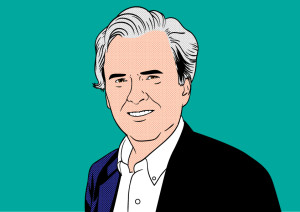Realtime Banking Is Coming at You: Ready or Not
By Robert McGarvey
A new report out of Celent asks a question that just may terrify you: Are banks ready for a real time world?
You probably know the answer at your credit union.
Join the club: many – probably most – credit unions are nowhere close to embracing a real time financial services universe.
Tell me why it takes a day – sometimes several days – to move money from an account at my credit union to a payee already in the system when, truly, it simply is a matter of shifting bits and bytes?
Money can – and now should – move as fast as a text message and if a friend in India sends me an SMS via Facebook right about now it is showing up in my FB queue.
It can happen in financial services. With money. Everybody – that means you – will have to climb aboard. “Real time payments,” said Celent, “have moved beyond being an if to a when.”
Here’s a Celent observation: “Most existing payment engines have a number of challenges in delivering real-time payments. First, they are generally batch-driven, rather than single message and instant, and so simply not suitable. The second, and less obvious reason, is that they require downtime for maintenance and upgrades, something that isn’t allowed in a real-time payment solution. Many real-time payment schemes only have downtime over the year measured in seconds. Old technology simply wasn’t designed to support that.”
What Celent is prescribing is adoption of a robust payments hub that can provide the 21st century world what it wants.
“Real-time payments require all the activity in the value chain to be carried out, typically in under a second, if not quicker. If all the processes are within the hub, they are easier to manage and coordinate. But as volumes increase, this becomes more and more essential. Furthermore, functions that sit within the hub will be subject to the same design requirements in terms of availability and maintenance,” wrote the Celent author, Gareth Lodge.
Some real time functions already are in use in the United States.
Digital currencies – the report pointed in particular to Ripple – are paving the way for a shift to real time money movement.
Zelle also is a step into real time for institutions that adopt it (and some credit unions already have – such as America First Credit Union and BECU). And Dwolla offers real time ACH transfer functionality.
Don’t necessarily expect smooth sailing for your institution into the real time universe. Exactly how – and how well – many competing real time systems will integrate with each other is not yet known.
Then, too, as Celent pointed out: “The term real-time payments perhaps hides an obvious truth: in order to make the payment real-time, everything and anything that touches the payment, including fraud checking, balance checks, and the front end initiation system have also to be real-time…24 hours a day, seven days a week.”
All of that represents a massive change in how credit unions work. Digital banks, Celent pointed out, are architected from the word “go” to handle real time. A legacy institution has a different, very real set of challenges. Said Celent: “Real-time payments then are the vanguard of the digital bank. New banks, built from the ground up, do not need to give this a second thought, but for any other bank, the task of converting from the existing infrastructure is a huge task.”
And the news gets worse. Said Celent: “Many banks still run core banking systems that are over a decade old. The chances are that unless it has been replaced within the last five years, it is still a batch system. This poses immediate challenges — how to update the customer balance until the next batch, overnight run.”
Institutions – and their cpre providers – are fiddling with workarounds. But that’s the point: there will definitely have to be workarounds and they may not always be easy, elegant or even straightforward.
What to do? The first step is recognizing that now indeed is the start of real time banking. That, said Celent, is integral to the transformation into the digital bank that just about all now know is the future. Wrote Celent: “Banks may see the need to move to a digital bank, but they may be struggling to make the business case for investing in real-time payments. Yet there is a confluence of the digital banking trend with real-time payments, as they share many of the same attributes and indeed, that make it impossible for a digital bank to truly exist without it.”
Absolutely right. Until real-time payments are part of the package the institution just isn’t a digital bank. Period.
